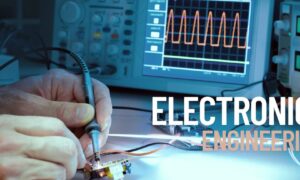Advancements in electronics used in medical devices have broadened the scope of their clinical and healthcare applications. A wide assortment of medical devices find widespread applications in treatment of diseases, diagnosis and monitoring of health conditions. The medical electronics market has evolved on the back of need for improving the troika of performance, biocompatibility, and reliability of electronics.
Stringent Compliance with Existing Standards Focus; Reliability and Biocompatibility Key Objectives
Electronics manufacturers serving the medical industry continuously advance the manufacturing and packaging technologies to comply with the latest standards and regulations. For instance, the microelectronic circuits that go in wide range of implantable cardioverter defibrillators and neurostimulators have undergone some remarkable advances. Examples are deep brain stimulators to treat chronic conditions in humans. Several areas associated with the ways electronics are fused in medical technologies attract attention of medical researchers. A case in point is the use of adhesives. Another promising area is biomedical signal processing, where engineers are constantly coming out with new ways that will enrich the health care landscape.
Request Brochure for Medical Electronics Market Report
The growth of the medical electronics market has been multifaceted, with distinct trends shaping the clinical and healthcare applications. The rapidly increasing trend of microelectronics and the incorporation of better biocompatible materials are two of such developments. Advances in chip and printing technologies have been at the forefront of these. An example is ensuring a robust hermetic sealing of the microelectronics circuits pacemakers and defibrillators, which is key to their performance and more so for safety of patients.
Implantable Medical Devices Replete with New Opportunities
Implantable systems have been a vast avenue for players in the medical electronics market. These will continue to attract the attention of medical researchers. Over the last decade, they are frenetically investigating the potential of new engineering technologies and testing them in pilot studies. Neuroengineering is one of such areas brimming with incredible revenue opportunities.
Medical electronics has been at the heart of developments in managing range of medical diseases and disorders. The morbidity and mortality of diseases such as epilepsy, spinal cord injuries, and Parkinson’s disease pose considerable health burden to the global healthcare systems. Conditions such as tremor, strokes, and dystonia have come to attract new potential for electronics manufacturers. Particularly, a growing number of companies are fascinated to meet the market demand for therapeutics for treatment-resistant neurological disorders. Further, the use of cutting-edge medical electronics can prove to be life-saving in patients with traumatic brain injury. Biocompatibility and non-toxicity are the overarching principles motivating innovations in medical electronics manufacturing and production.
Electronics Manufacturers Pursue Neuro-engineering to Meet Patients’ Demand
The growing demand for novel pharmacological treatment is a key trend fueling strides in the medical electronics market. The medical electronics market has seen the advent of new prototypes with promising designs, an example being deep brain stimulation.
Two areas worth pursuing are stimulation techniques and electrodes technologies. The results of the massive efforts made in the past few years have been incorporated in an array of implantable medical devices used for epilepsy. A case in point is neuroprosthetic devices. New techniques for integrating neural amplifiers in these medical devices have come to the fore, an example being autozeroing technique.
TMR offers custom market research services that help clients to get information on their business scenario required where syndicated solutions are not enough, request for custom research report
Thus, neuro-engineering has been flurry of developments, and might serve as source of new revenue streams for electronic companies serving the needs of the medical and healthcare industries.
Wearables have been extensively explored for neurotechnologies used in medical devices. Attaining an acceptable tradeoff between biocompatibility and reliability on one hand and performance on the other is a hard task, and there exists an unmet need. Ongoing research is keen on closing or bridging the gap, such as in e-skin based neural interfaces. More such studies are needed to rein in the growing morbidity of brain diseases in future.



































